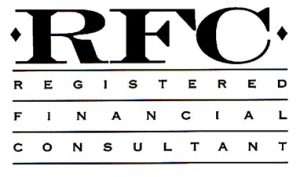Are you wondering how to save best for your children’s college education? Do you know the best ways to save for your child? If you think that by just opening a savings account, you are setting your child up for success when it comes time to pay for college you are mistaken. Gone are the days that by merely saving a little every paycheck you will be able to afford the cost of future education expenses. And if done properly these savings can be done efficiently and in a tax-advantaged manner. I will touch on three possible means of saving for your children or in some cases grandchildren in the following paragraphs. These methods are not the only ways, and I will not go into their full details as each could be a post in itself.
The first is for relatives of your children who want to help pay for education expenses of your children. The first method that does not involve any tax deferred accounts in any manner is for your relative to pay the expenses of the university directly. By doing this, no gift taxes will be assessed, and it will not affect the financial aid that you and your child apply for as these funds are from someone outside of your immediate family. Family members can still help fund a child’s education by contributing to a state-sponsored 529 plan. In the event, this is the route the relative decides to go they can contribute five times the annual amount excluded from gift taxes every five years. This allows for the maximum growth of the 529 plan as more money may be placed in it at an earlier age.
Parents have advantages when it comes to 529 plans as they are the owners of the plan and thereby the funds associated with it. The reason for this is because the parent can change the beneficiary of the plan at any time. This is convenient if you have more than one child who may go to college, a child gets a significant scholarship or does not go at all allowing the parent to name another beneficiary. These plans allow for the investment in various financial products that are in that state’s plan and can be as aggressive or conservative as the parent desires to be. These funds and their earnings grow tax deferred over time as long as they remain in the 529 plan. Then once qualified educational expenses have been incurred the plan then pays for these costs from a tax-free source. If the expense is not a qualified expense, there is a 10% penalty and income taxes will be assessed on any gains.
Now some states are offering the opportunity to pay for in-state tuition at the current prices for future use. These plans are not as flexible as true 529 plans as they are not easily transferred to private or out-of-state institutions. But parents can get back their principal plus a modest gain if the child does go to an out-of-state or private institution. And like 529 plans the beneficiary can be changed to another child in the event the original child has other arrangements.
Certain trusts can be used very effectively as well but tend to be more complicated and more expensive to setup and maintain. Also, in these trusts there is little to no control over how the money that has been placed in the trust is spent once the child reaches the age of majority. In other words, money that was meant to be spent on education can be used by the child for any expense that they want and is not limited to education. That means is they want to buy a car or go to Europe nothing is stopping them from doing so.
Next to the state-sponsored 529 plans I like the use of ROTH IRA’s the best. Though unlike a 529 plan where the contribution limits are higher IRA’s are currently limited to $5,500 in contributions a year. And in the case of a ROTH IRA the child must have earned income at least equal to the amount being placed in the IRA up to the annual limit. Then these funds will grow tax-deferred until they can be withdrawn at age 59 ½ and provided all terms of the ROTH IRA have been met, the income generated from the investment will be tax-free. Under certain circumstances such as disability, first time home buyer or qualified education expenses the funds may be withdrawn before 59 ½. Also, after a period the principal may be taken out of the account provided all earnings remain until age 59 ½ with no penalty.
If you want more information on how to save or pay for a child’s education feel free to contact me for more information.




